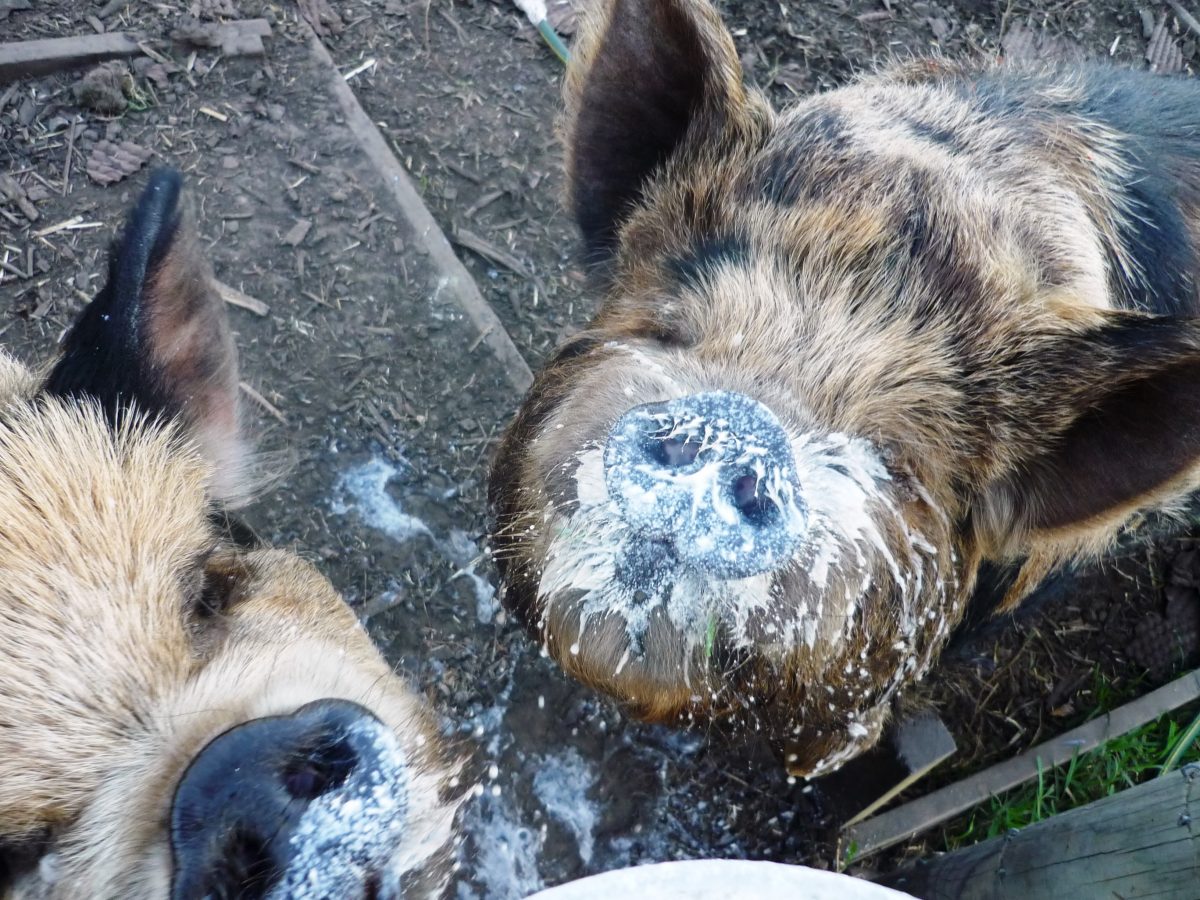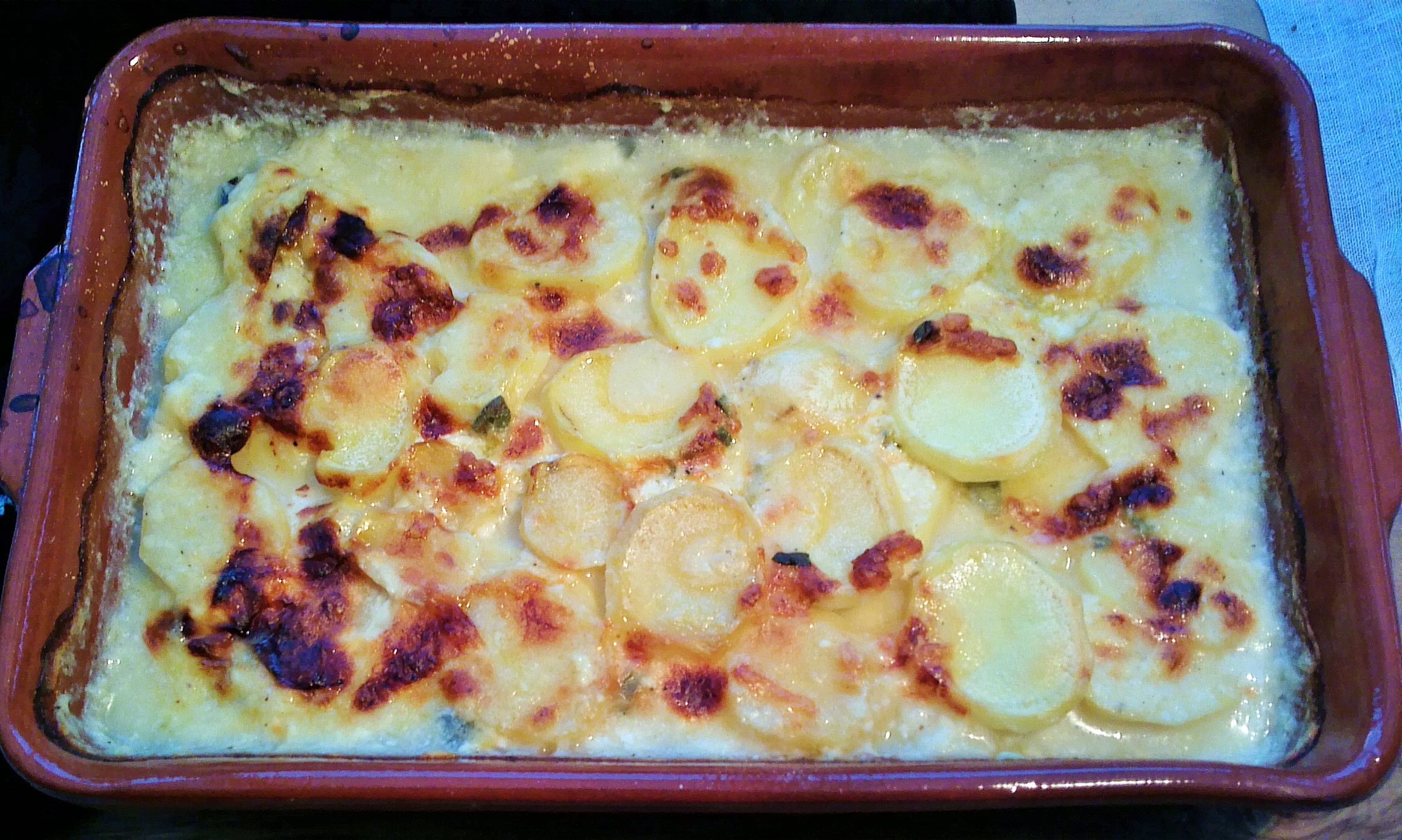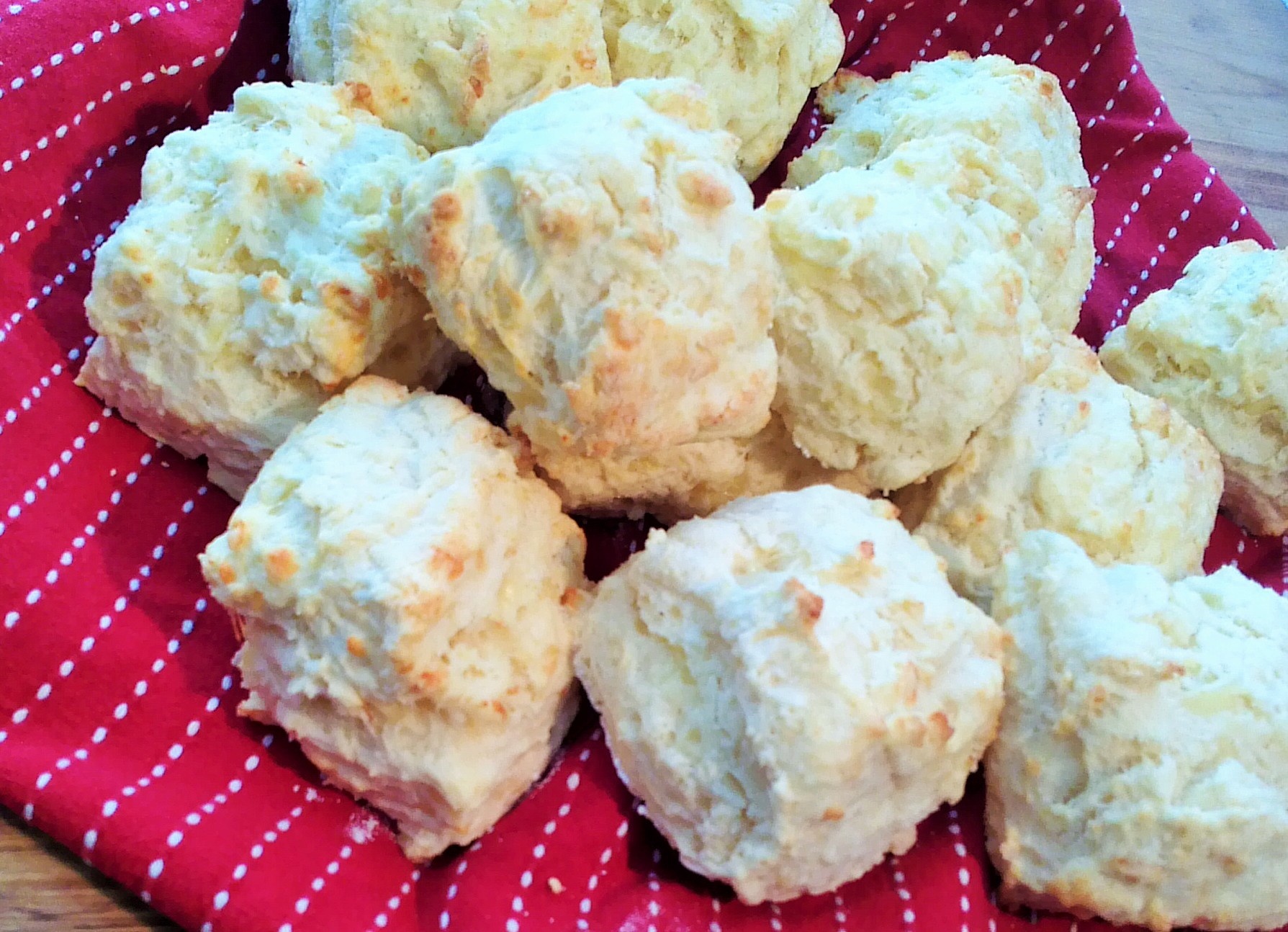I make my own cheese, which produces a lot of whey. But rather than tip it out, there is so much that can be done with this “by-product”.
When you make cheese, enzymes added to the milk causing it to separate into solids and liquid. The solids, or curds, are strained and become the cheese. The remaining liquid is a watery substance that is high-in protein called whey. Whey has a mild sweetness and faint acidity that actually complements a wide range of flavours, both sweet and savoury. There is no need to throw it away. If you can’t use it straight away in one of the following ways, just freeze it for later. Or, if you have animals, it can be a nutritious supplement to their normal food. My chickens, pigs, dog and cats all fight over it.
You can use whey in any dairy-based meat dishes. A whey-marinade for meat makes it very tender. So, if a recipe calls to marinate meat in yoghurt or milk, you can use whey instead.
Whey also makes an excellent substitute for water or stock when cooking dried beans or in any blitzed-up green soup.
If you haven’t had enough of cheese making already, you can use the whey to make ricotta. Ricotta literally means ‘re-cooked’, because you have already boiled milk once to make curds and whey. If you boil the whey again, with a new coagulate, you get ricotta.
You can substitute whey for milk or water when you make bread, cakes, and biscuits. The active cultures in the whey add depth to the flavour of bread, and the acids contribute to a softer crumb.
It can also substitute for milk in breakfast pancakes for the kids or in your favourite breakfast smoothie without it altering the taste.
If you cook your potatoes in whey, it gives them a nice, light dairy flavour.
You can also use whey instead of stock or water to cook polenta or rice. It makes for a lighter, more tender texture in polenta and a creamier rice. Just remember to salt the whey first.
The Iranian type of fermented whey, called kashk, is used to add an umami flavour to meat dishes, soups and to dips. A popular spread, kashk-e bademjan, is made by mixing cooked eggplant with caramelised onion, mint, kashk and then maybe garlic, tomato paste and walnuts.
If you are into fermented foods then you can give lacto-fermentation a whirl. Use whey to jump-start the fermentation process in foods like kimchi and sauerkraut.
I have used whey to water my tomatoes, but it is also great for acid-loving plants like azaleas, rhododendrons, garlic, and many types of berries. Of course, if you do this, you do take the risk of your animals trying to lick the soil. They do love it!

Whey also has a long history of medicinal use. It has been used as a tonic or a drink to cure a variety of ills. According to V.H Holsinger in ‘Whey Beverages: A Review’ (yes, there is a whole volume on whey!), it was used as a therapeutic drink as far back as 460 BC. In the mid-19th century there were as many as 400 ‘whey houses’ in Western Europe that served whey drinks to cure everything from liver diseases to tuberculosis. Just mix half a cup of whey with half a cup of water and the juice of lemon and drink immediately!
This potato gratin recipe is delicious with whey and welcomes the addition of sage and even anchovies if you like.
Whey Au Gratin Potatoes
4 large potatoes, peeled and sliced
2 cups grated cheese (I used a mix of Gouda and cheddar)
2 tablespoons flour
2 cups whey
4 tablespoons cream (or milk if you don't want to make it too rich)
thyme to taste
salt & pepper to taste
Toss the flour with the grated cheese. Place one layer of potatoes in a lightly-greased baking dish. Sprinkle with cheese, thyme and salt and pepper. Repeat for two more layers. I recommend going light on the seasoning, especially the thyme. You don't want to overwhelm the dish.
Whisk the cream with the whey and pour this over the potatoes. Bake at 175° C uncovered for 2 hours or until the potatoes are tender and the sauce has thickened.

The whey makes the lightest fluffiest scones ever. I could never make successful scones previous to using whey. Mine always turned out like bricks. But this recipe never fails. The scones are incredibly light, and even better; they last till the next day as if they had just been baked- something no other scones can do.
Cheese & Chilli Scones
The chilli is only in the background to highlight the cheese, not overpower the scone.
3 cups flour
2 heaped teaspoons baking powder
Pinch of salt
good pinch of chilli powder
80g very cold butter
1 cup cheddar cheese, grated
1½ cups whey
Preheat the oven to 200°C, on fan bake. Sift the flour, baking powder, and salt into a bowl and stir in the chilli. Cut the butter into small chunks and add to the bowl. With clean hands, work the butter very lightly into the flour mixture to form sandy looking crumbs. Then add the cheese until just mixed. Be careful not to over-mix this.
Add the whey to the dry ingredients and mix with a knife. Keep the mixture moist. Add more whey if necessary.
Place the mixture on a floured bench and gently pat into shape with a quick knead (about 3 pats only). Cut into pieces and place on a baking tray, close together.
Bake for 10 to 15 minutes, or until golden.

Bara Brith
This Welsh fruit loaf is usually served with salted butter or a good slice of cheese, so it is an ideal cake in which to use whey as the liquid component.
250gm sultanas
125gms currants
125gms raisins
500gms brown sugar
600mls whey
2 heaped tablespoons black tea leaves
1 egg, lightly beaten
750gms self-raising flour
2 teaspoons mixed spice
Vegetable oil or butter for greasing
Heat the whey to simmering and then add the tea leaves. Stir and take off the heat. Let the tea leaves steep until you have a strong tea flavour. Strain the liquid and throw away the tea leaves. Put the dried fruit and sugar into a bowl and pour in the tea/whey liquid. Stir it well and cover with a clean tea towel. Leave it overnight for the fruit to soak up the moisture.
Heat the oven to 170°C. Grease 2 loaf tins and line them with baking paper. Grease the baking paper as well. Stir the beaten egg into the fruit and whey mixture. Sift together the flour and spice and add into the mixture, stirring until well combined. Divide the mixture equally between the 2 tins, smoothing down the surfaces with a knife. Bake the loaves in the oven for 1½ hours and then turn the oven down to 140°C and bake for a further hour or until an inserted skewer comes out clean. Turn the loaves out onto a wire rack to cool.
